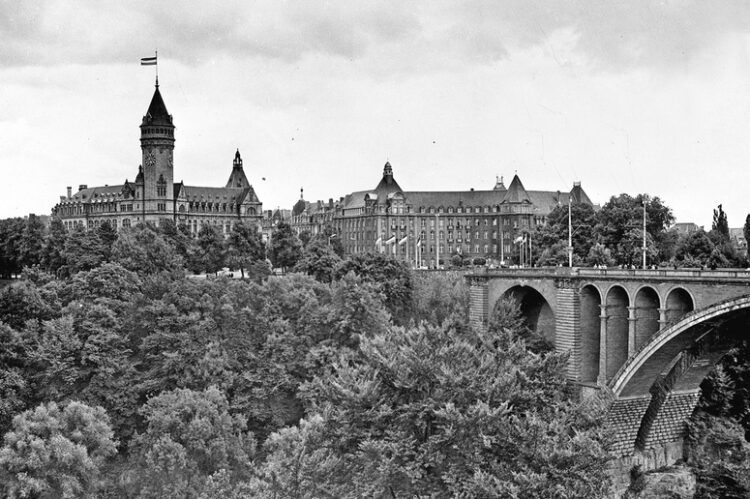In November 1984, Prince Jean returned to Washington D.C., this time as Grand Duke Jean of Luxembourg. President Ronald Reagan toasted the Grand Duke at dinner, highlighting Luxembourg’s contributions to the Alliance: “Over the years, relations between Luxembourg and the United States have been those of close and abiding friends. We view with the deepest respect your contributions to NATO, including the registration of AWACS aircraft and your splendid efforts during the Enforcer exercises.”
In the lead-up to the Grand Duke’s visit, The New York Times described Luxembourg as “arguably Europe’s most unabashedly pro-American country” which “cherishes this reputation for being Washington’s best friend”. Luxembourg has been not only a linchpin of European integration, but also one of the most ardent and unambiguous supporters of America’s presence in Europe. This close relationship arises not only from the country’s liberation by the US army in both world wars, but also from the large Luxembourg community in the United States. During the 19th century, approximately 50,000 Luxembourgers immigrated to America. This figure is remarkable considering that Luxembourg’s total population in 1900 was only 234,000. At one point, approximately 20 percent of all Luxembourgers were living in the United States. Most of them settled in the American Midwest, with more than 16,000 living in Chicago alone. The Luxembourg American Cultural Society, located in the town of Belgium, Wisconsin, maintains archival files on over 6,000 Luxembourg families throughout the United States. The community continues to thrive and to celebrate its heritage.
US Army official photos for General George S. Patton.
In Hamm, just outside the City of Luxembourg, lies the Luxembourg American Cemetery and Memorial. Over 5,000 American soldiers are buried at the cemetery, most of whom fell during the Battle of the Bulge (the last major battle of the Western Front in the Second World War, which raged across northern Luxembourg in the winter of 1944-1945).
The most famous grave at this cemetery belongs to General George S. Patton, one of the brilliant and hot-tempered heroes of the Second World War. Patton is remembered for his fiery speeches to his troops, his ivory-handled pistols and his tactically brilliant campaigns in North Africa, Sicily, and France after the Normandy landings. When Patton died in a car accident in West Germany shortly after the war, his wife chose for him to be buried alongside his men in Luxembourg. Patton was interred on Christmas Eve, 1944, “his grave no different from 6,000 others that mark the final resting places of soldiers from his own beloved Third Army”.
Contributing to the collective defence effort
Luxembourg has welcomed Allied activity on its territory, including hosting several meetings of NATO’s top political decision-making body, the North Atlantic Council, in Luxembourg City. One of the most significant NATO meetings in Luxembourg took place in June 1967. Writing with characteristic Luxembourg modesty, Prime Minister Pierre Werner welcomed delegates to the meeting, the first to be held in Luxembourg: “The hospitality we shall be offering to our friends and Allies may lack the polish of the great Western capitals but it will be all the more friendly and eager.”
Source link : https://www.nato.int/cps/en/natohq/declassified_162355.htm
Author :
Publish date : 2019-04-28 13:35:48
Copyright for syndicated content belongs to the linked Source.
